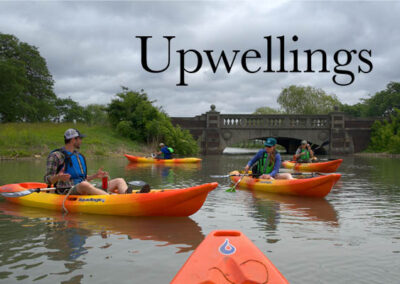The Great Lakes are a way of life in Michigan – a place for fun, recreation, enjoying nature, and creating lasting memories with family and friends. While healthy lakes are critical for the state’s culture and economy, they do require constant care, research, and management. Scientists and researchers from the Cooperative Institute for Great Lakes Research and Michigan Sea Grant at the University of Michigan School for Environment and Sustainability are conducting vital work to ensure these valuable resources remain safe and healthy for the enjoyment of Michiganders for generations to come. Here are six ways this Great Lakes research benefits Michiganders:
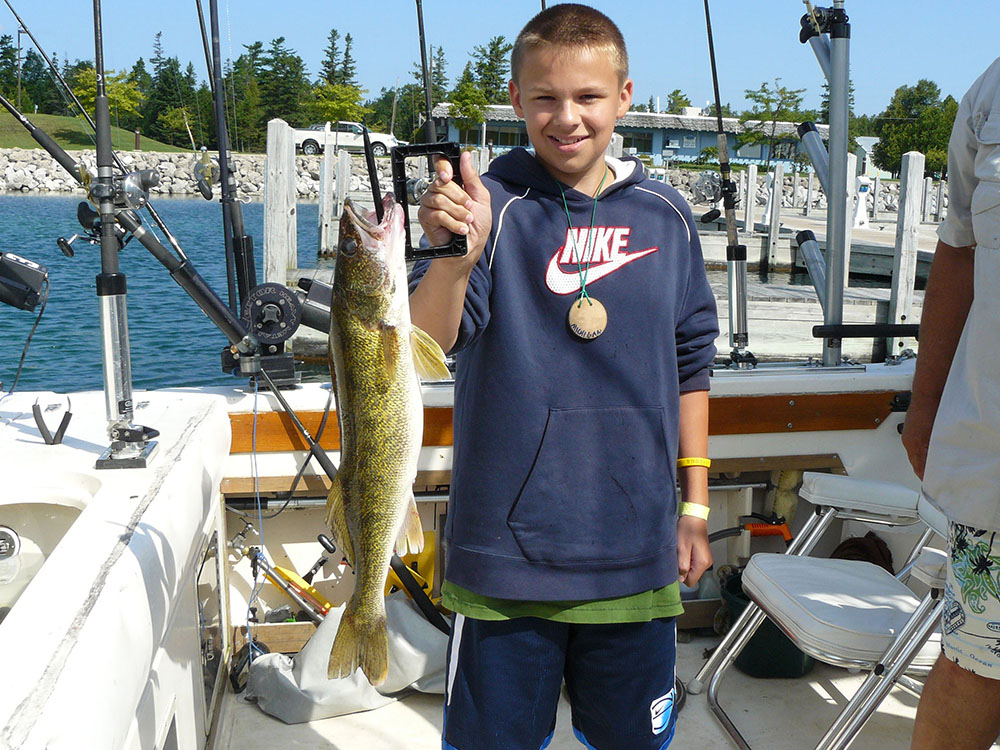
Photo: Dan O’Keefe, Michigan Sea Grant
Keeps Fishing Fun (and Sustainable)
Protecting spawning reefs and wetlands is a key way to support native fish species, many of which are valuable to commercial fishers and recreational anglers, generating millions for local economies. Thanks to stocking programs, for example, Saginaw Bay once again has a world-class walleye fishery that supports fishing tournaments and a high-quality recreational fishing industry valued at over $33 million per year. Stocking programs are also helping other native species, such as cisco and lake sturgeon, return to the lakes. We also collaborate with others in the Great Lakes to ensure that our fish is safe to eat, including monitoring the effects of PFAS, or per- and polyfluoroalkyl substances, a group of manufactured chemicals that are in industrial and consumer products.
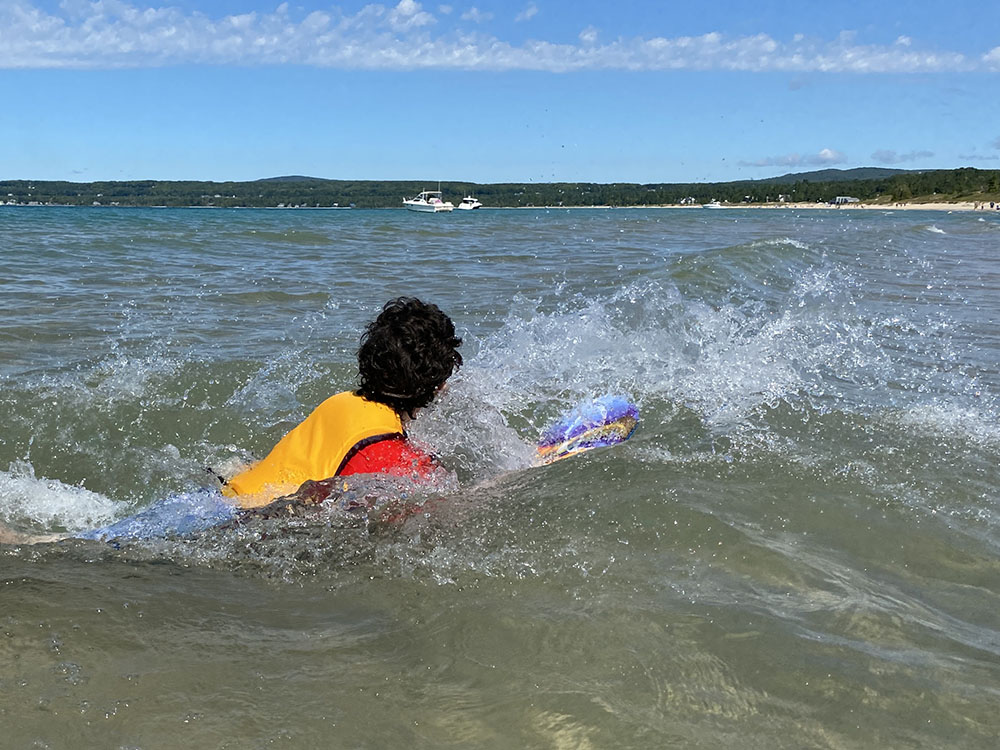
Photo: Todd Marsee, Michigan Sea Grant
Makes sure you can swim and boat without worry
Research helps monitor harmful algal blooms that produce toxins and other harmful contaminants that can affect public health and water quality. In addition, Michigan is home to more than 80 public marinas and harbors, which are part of a thriving boating culture that generates $2.4 billion in economic activity for the state each year. Marinas offer a “last chance” opportunity to treat and manage toxic runoff before it enters the Great Lakes. We support programs that help marinas keep our lakes clean and ensure they protect the lakes and public health. We also provide information on water safety. Buoys and other autonomous vehicles monitor key aspects of the Great Lakes environment that provide critical information needs for public health protection and navigation safety.
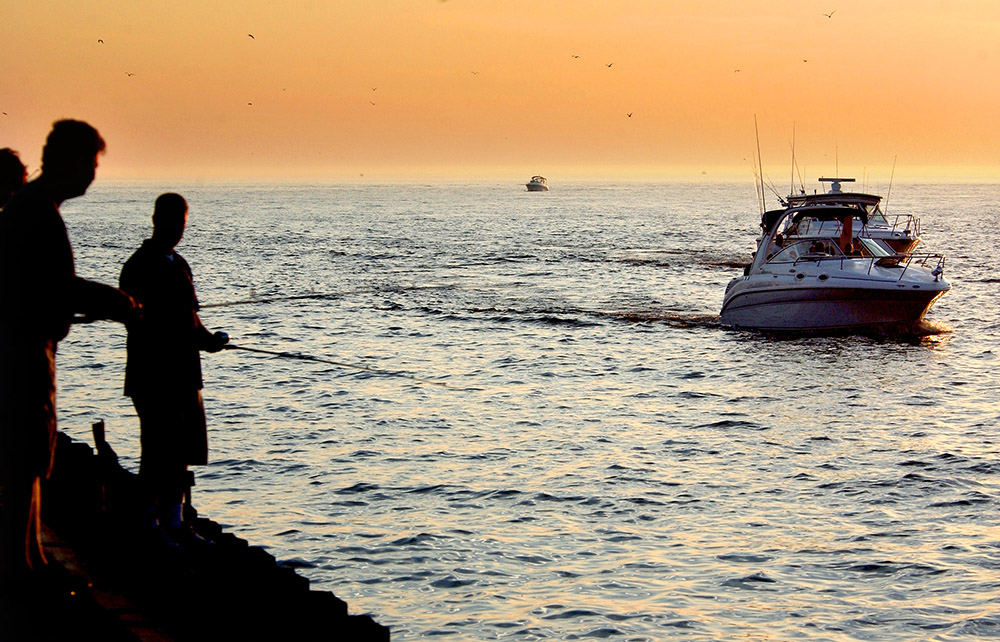
Photo: Todd Marsee, Michigan Sea Grant
Protects Your Favorite Beach Towns
Recreation on the Great Lakes – including world-renowned boating, hunting, and fishing opportunities – generate more than $52 billion annually for the region. Tourism in Michigan supports 50,000 jobs and composes approximately 60% of all economic activity derived from the Great Lakes. Our work helps ensure coastal communities have the tools they need to strengthen their waterfront assets, such as by installing green infrastructure to prevent flooding and runoff issues.
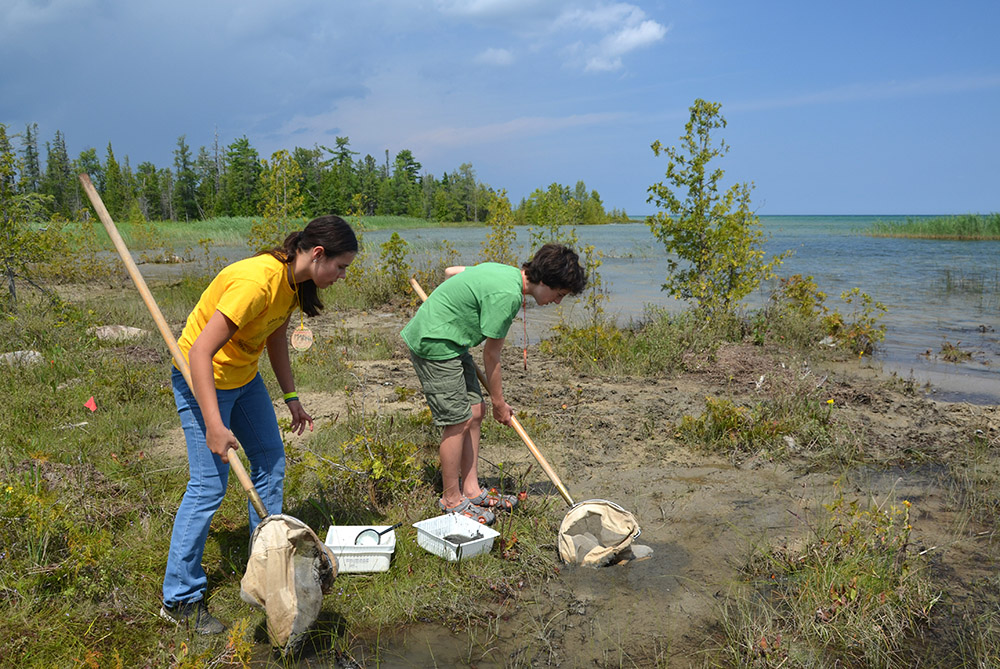
Photo: Todd Marsee, Michigan Sea Grant
Connects Students to Science
Michiganders understand the value of the beauty around them and want to learn more. Our programs provide ample opportunities to learn about Great Lakes invasive species, wetlands, watersheds, fisheries, weather, water quality, and more. Michigan Sea Grant’s 4-H Great Lakes Natural Resources Camp engages dozens of teens each year in learning about local woodlands and wildlife while working alongside professional experts to explore potential career paths. For college students, CIGLR’s Great Lakes Summer Fellows Program—run in partnership with NOAA’s Great Lakes Environmental Research Laboratory—and MISG programs provide undergraduate and graduate students with real-world research experience and career training to prepare the next generation of Great Lakes scientists.
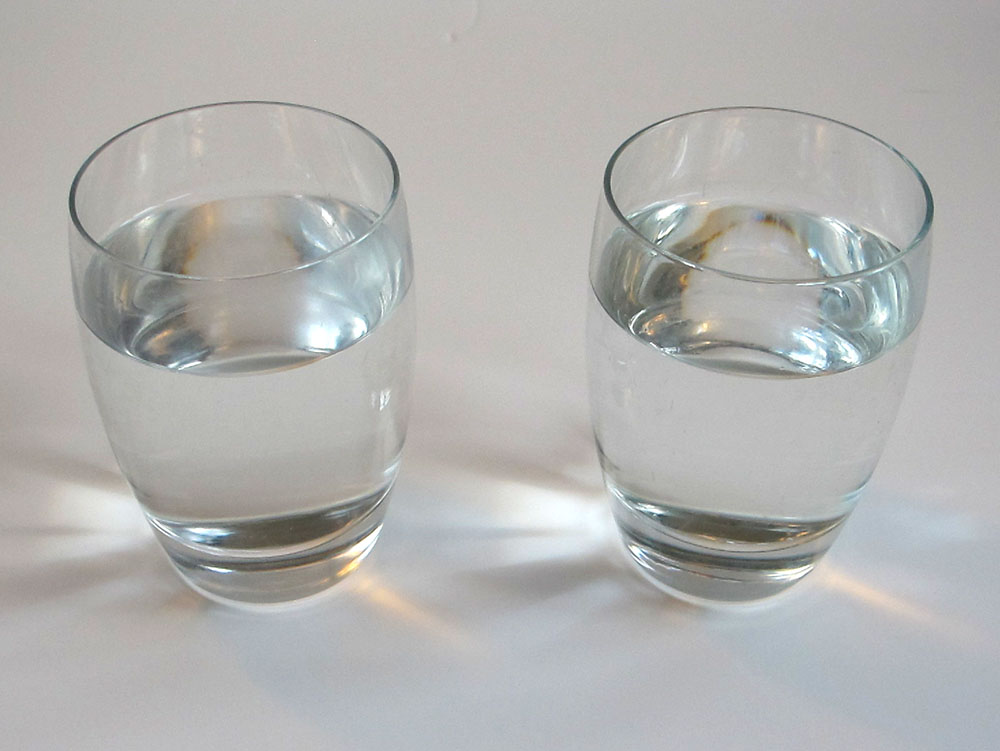
Photo: Todd Marsee, Michigan Sea Grant
Ensures Safe Drinking Water for All
The Great Lakes hold more than 5,400 cubic miles of water, which makes up more than 20% of the world’s surface freshwater. These lakes are a critical source of drinking water for more than 40 million people in the United States and Canada. Researchers are using real-time continuous monitoring instruments to better protect this vital resource by understanding how nutrients, temperature, and other factors contribute to harmful algal blooms (HABs) and low dissolved oxygen levels, known as hypoxia. Both HABs and hypoxia can impact aquatic ecosystems and threaten drinking water supplies. For example, in 2014, the city of Toledo, Ohio, issued a “do not drink” advisory for two days because of microcystin contamination. Hypoxic water also poses risks, as it may be corrosive, discolored, and contain heavy metals like manganese, which is toxic to humans at high levels. These threats highlight the critical need for constant monitoring and managing of water quality to ensure it remains safe to drink.
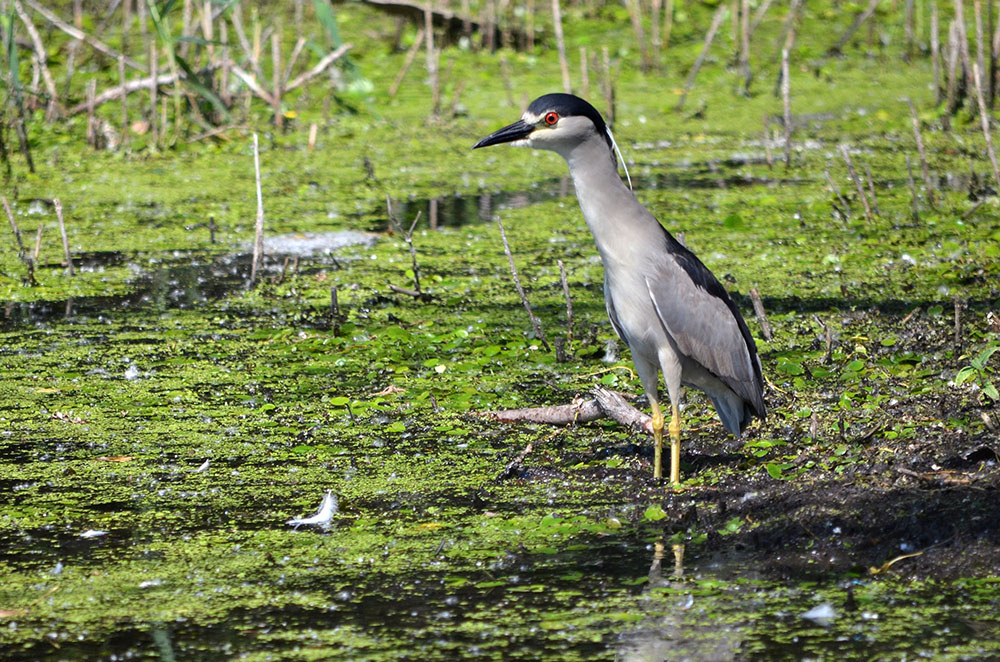
Photo: Todd Marsee, Michigan Sea Grant
Keeps Wildlife and Wetlands Thriving
Outdoor recreation is intrinsic to the Michigan experience. Hiking, biking, paddling, camping, swimming, birding, sailing, and fishing are just a few of the activities that lure Michigan residents and visitors outside. More than 3,500 species of plants and animals live in the Great Lakes basin, including 170+ species of fish. And more than 140 species of resident and migratory birds depend on Michigan’s coastal wetlands, beaches, sand dunes, and remote islands for food and shelter. Our work is helping attract rails and other migratory marshbird species to restored habitats and working to protect and restore these vital areas.

